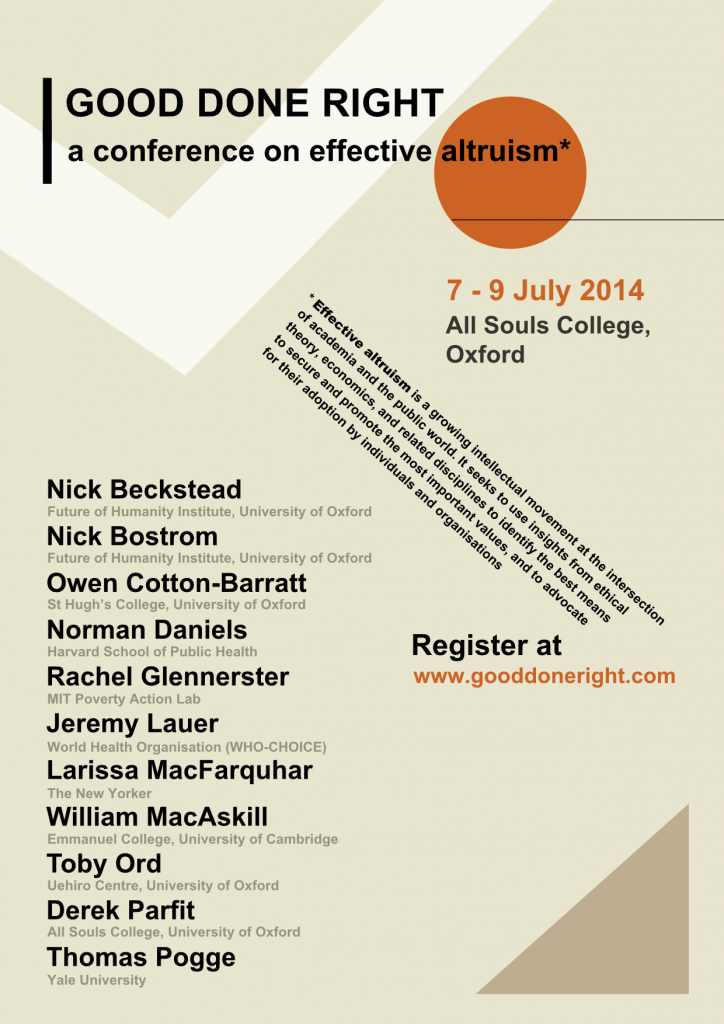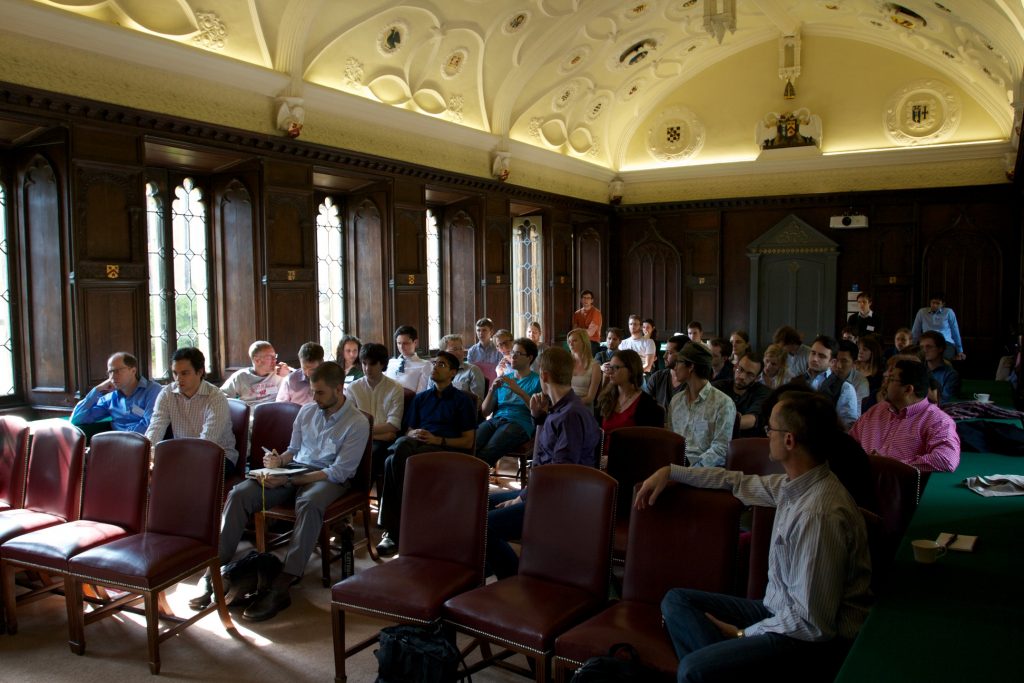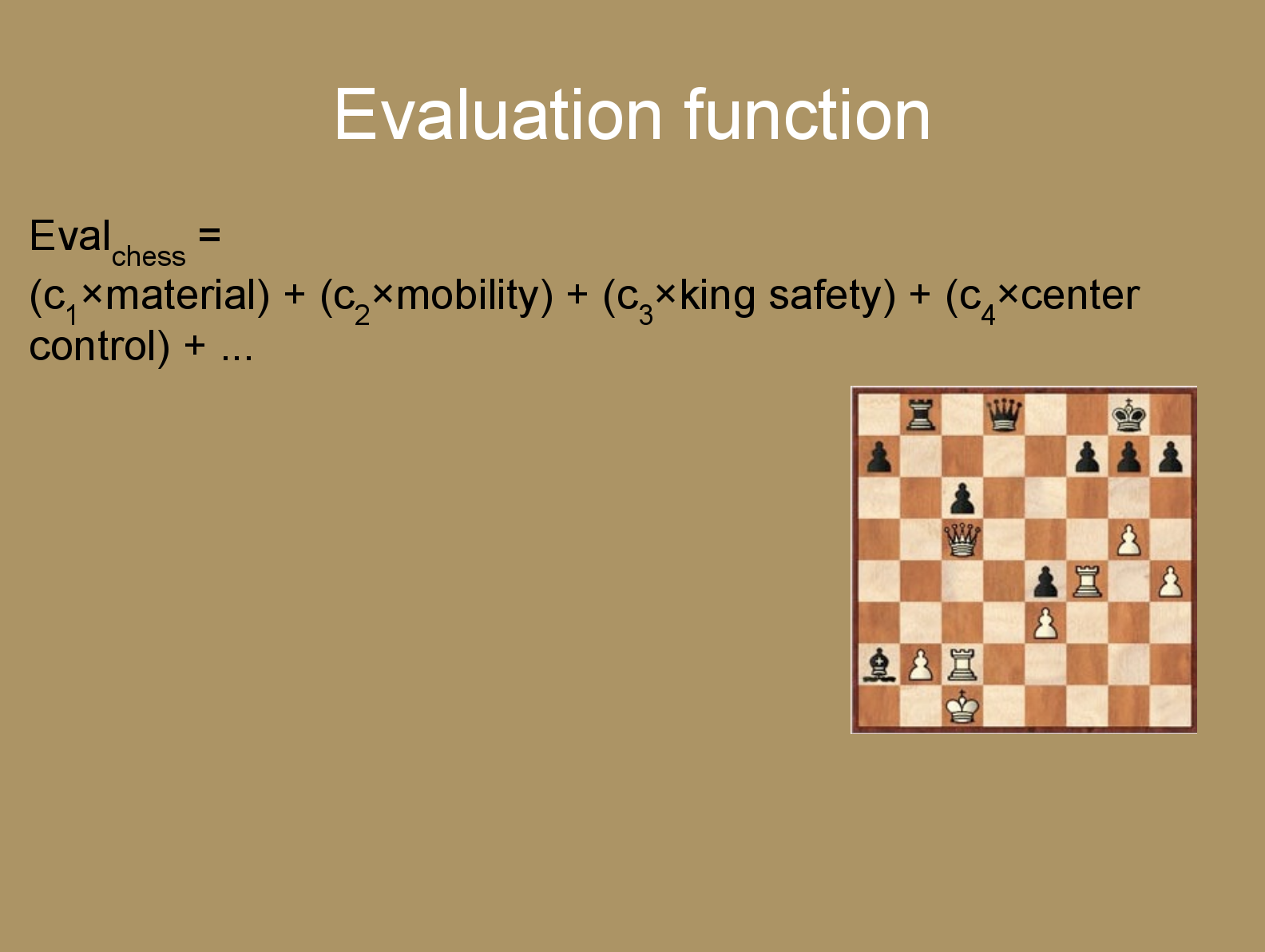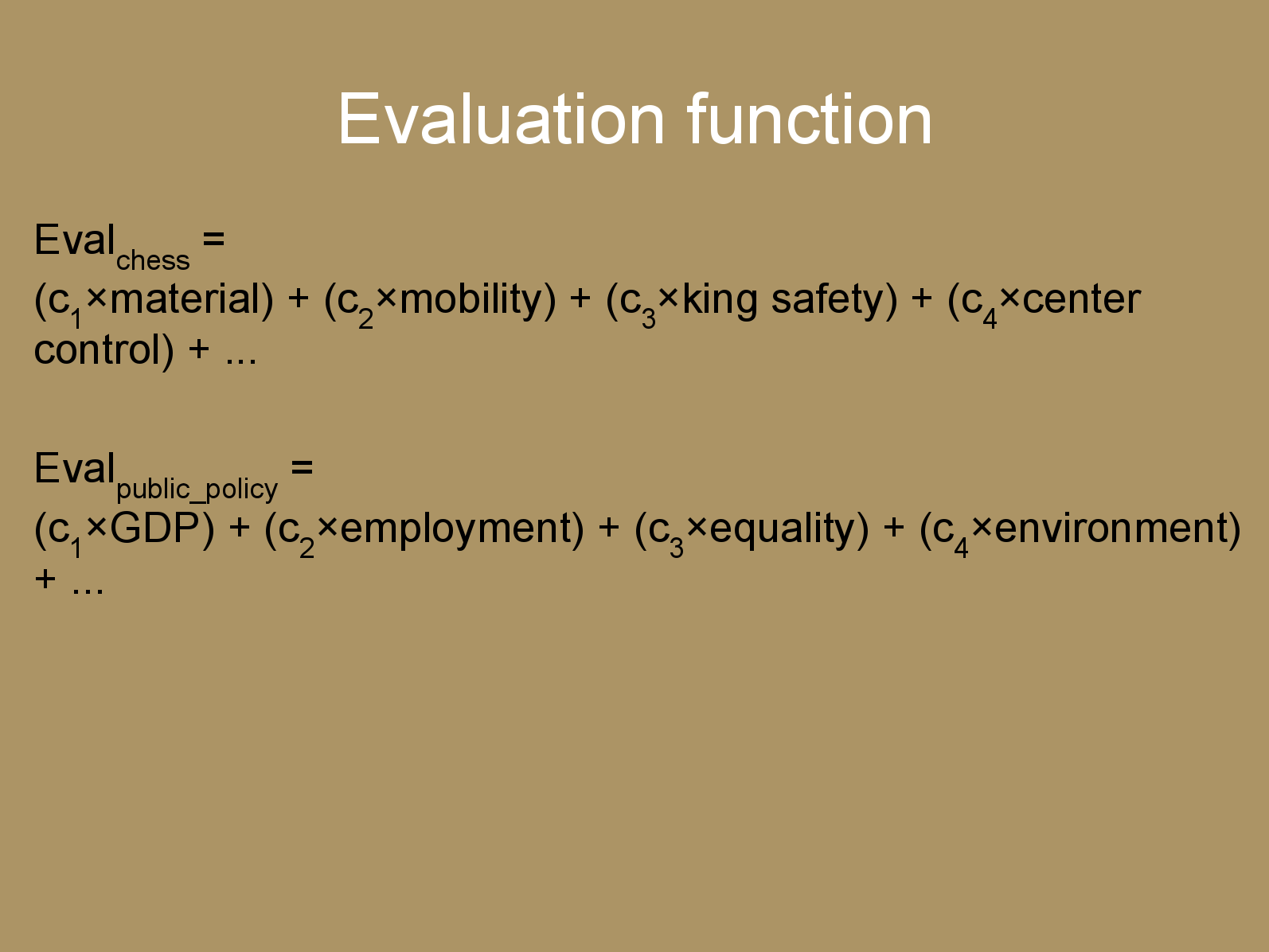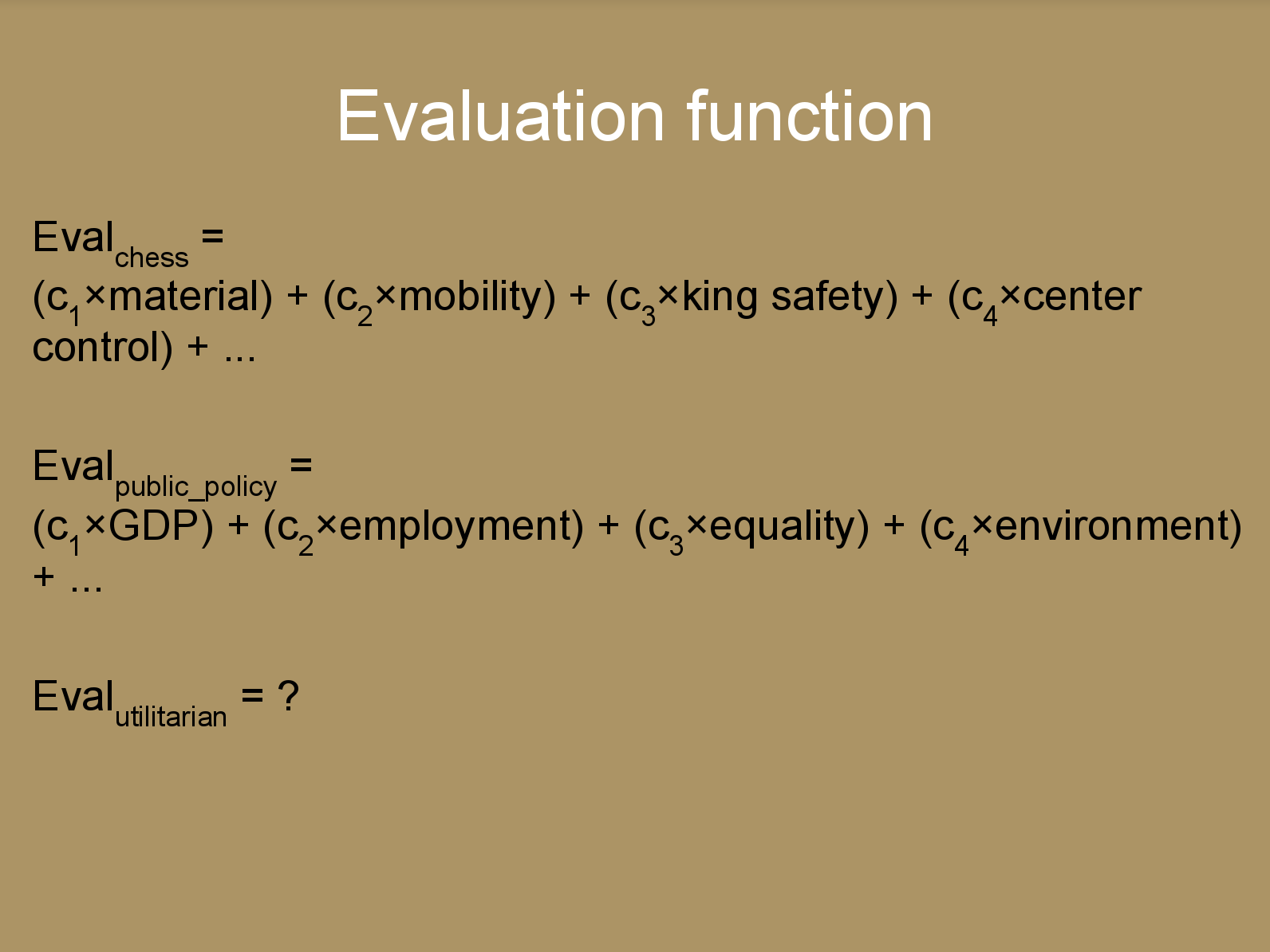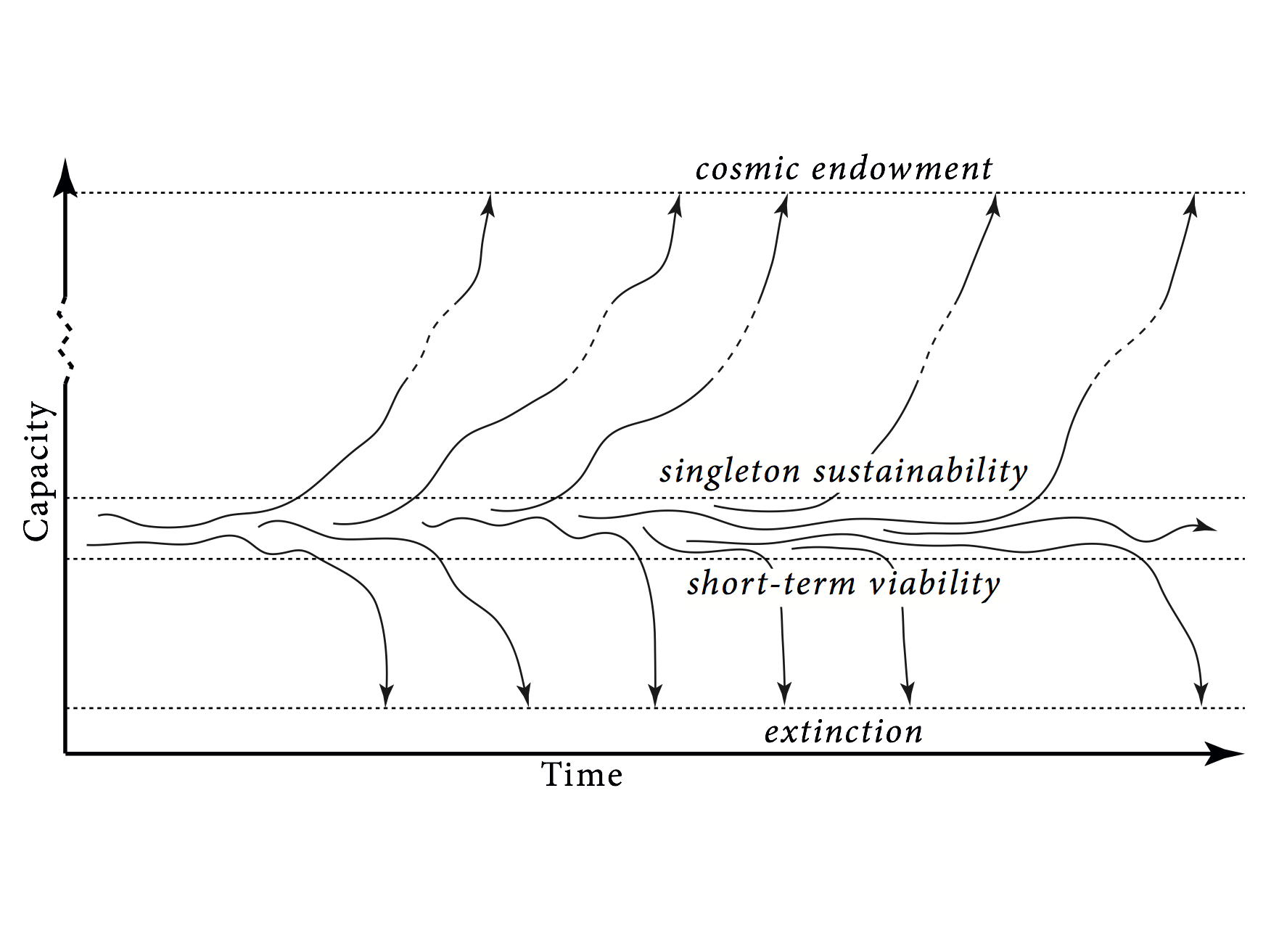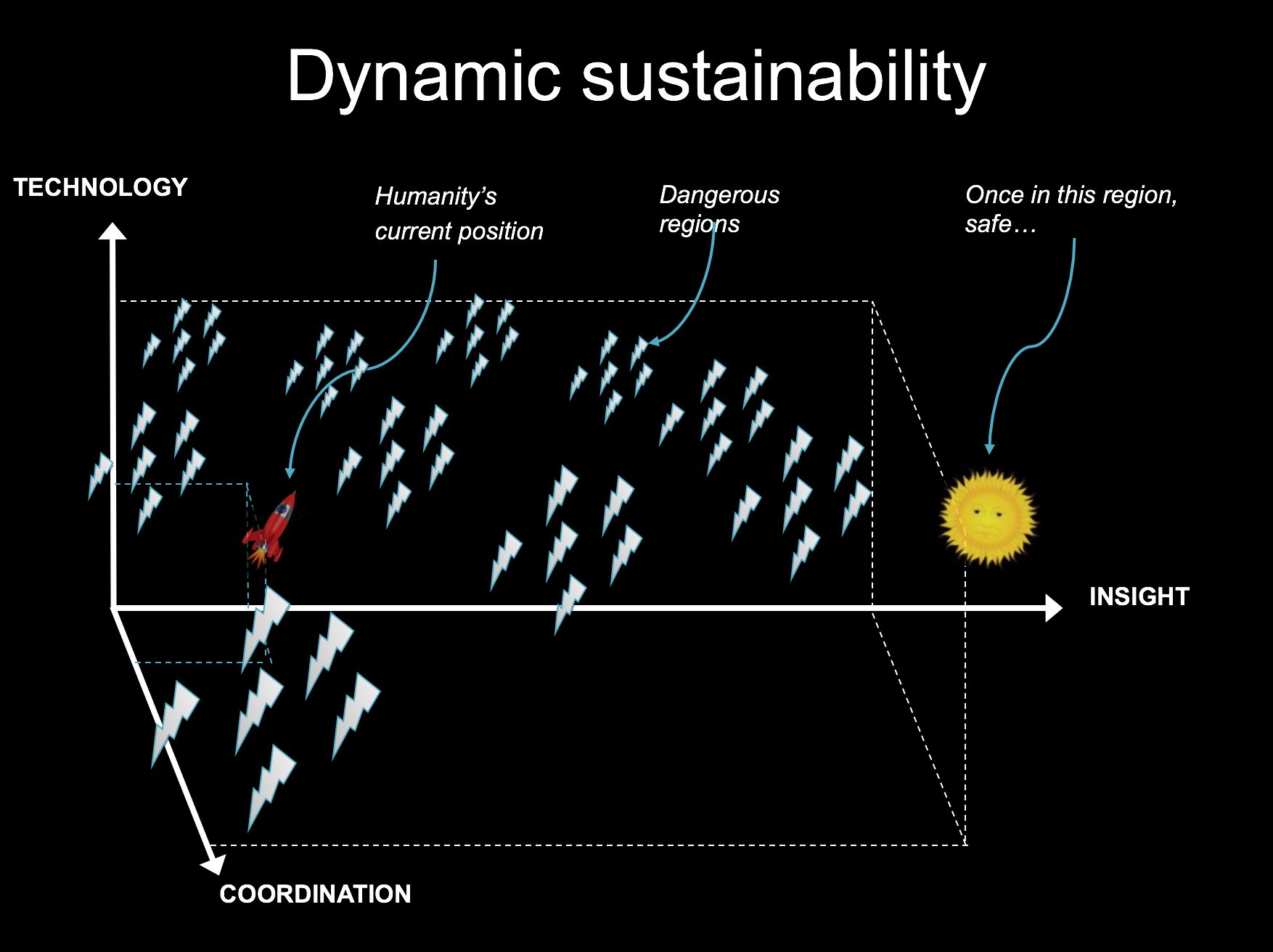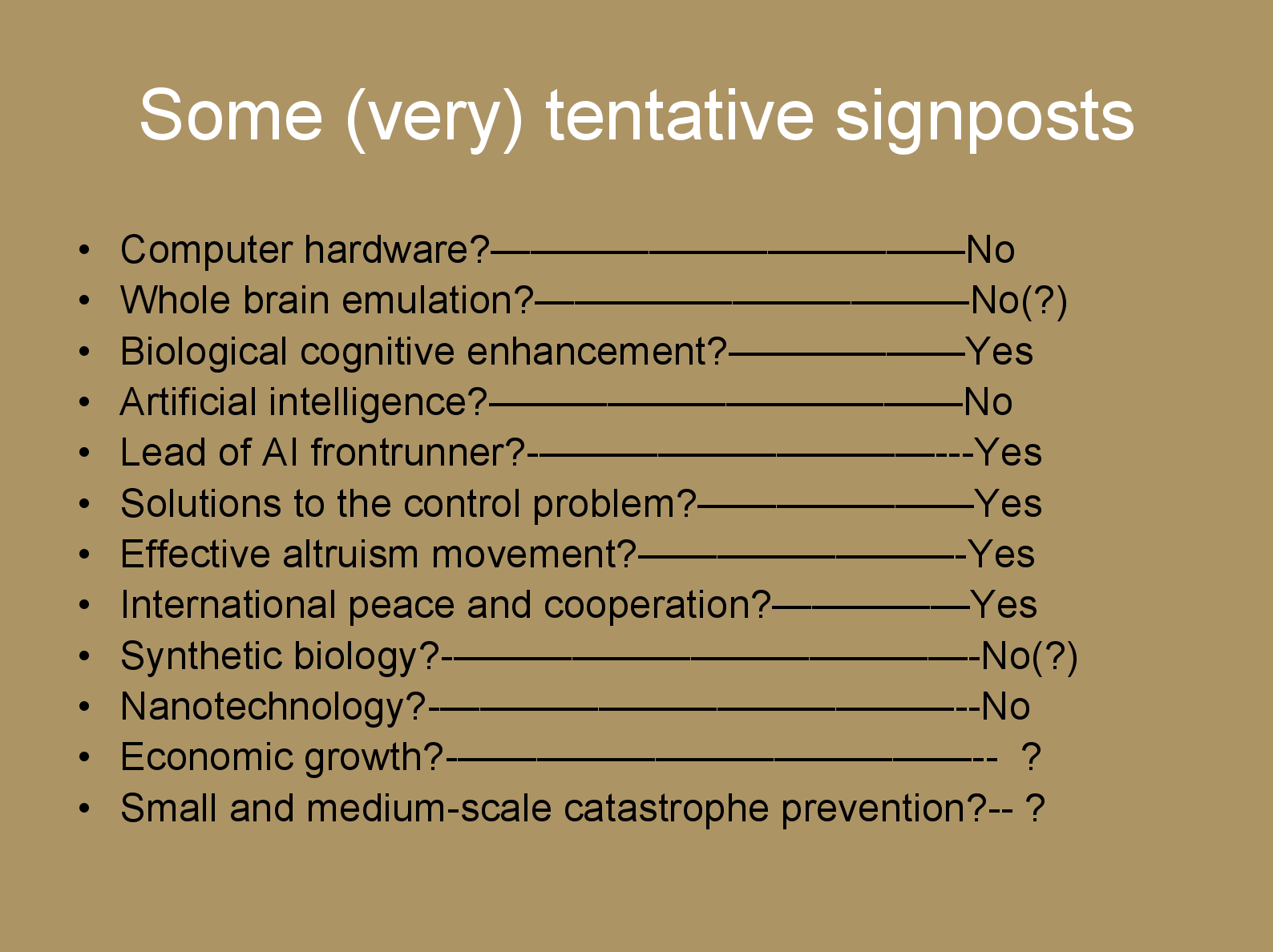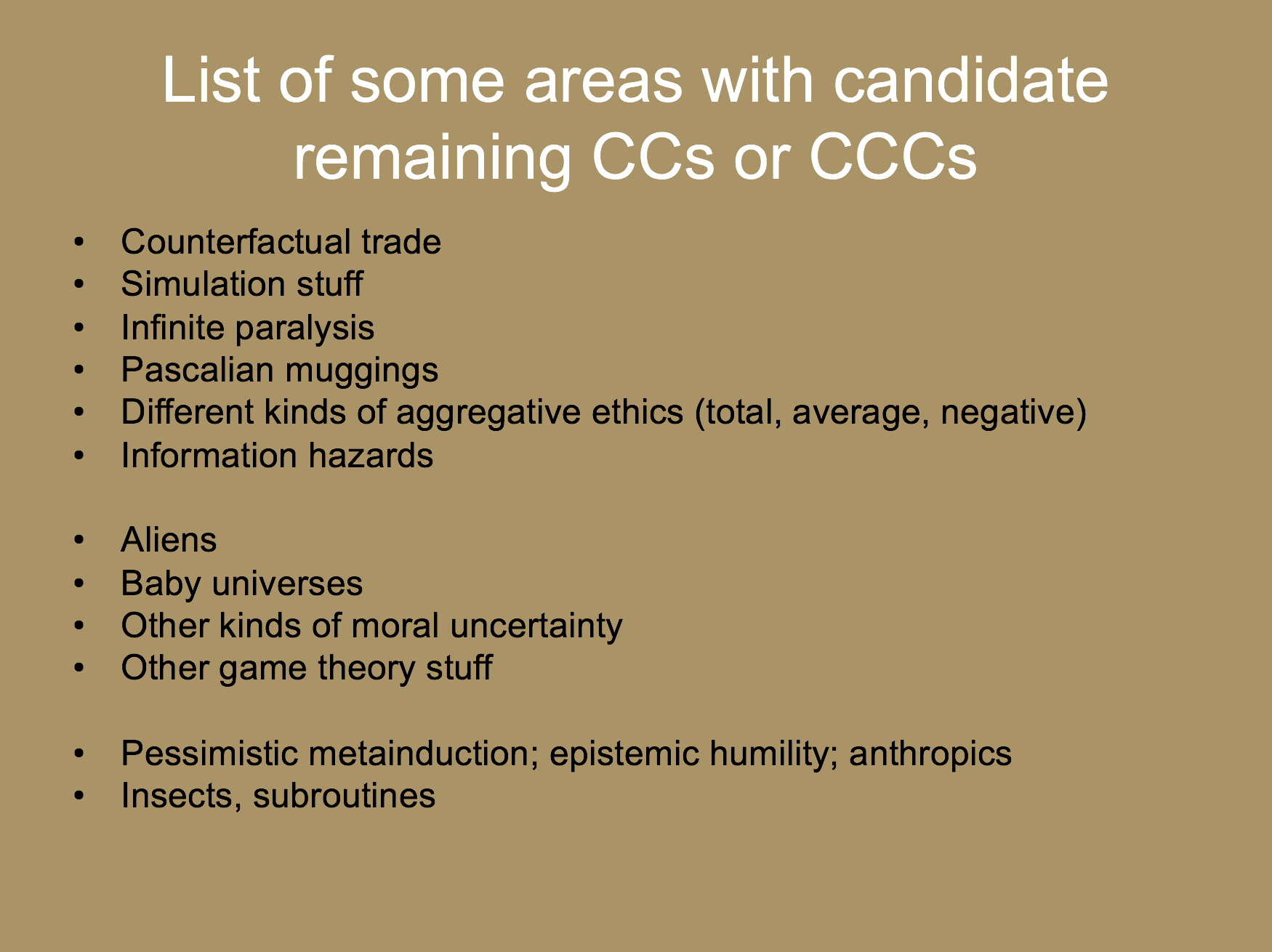Now let me come at this from a slightly different angle. In chess, the way you would ideally play is you would start by thinking the possible moves that you could make, then the possible responses that your component could make, and your responses to those responses. Ideally, you would think that through all the way to the end state, and then just try to select a first move that would be best from the point of view of winning when you could calculate through the entire game tree. But that’s computational infeasible because the tree branch is too much: you have an exponential number of moves to consider.
So what you instead have to do is to calculate explicitly some number of plies ahead. Maybe a dozen plies ahead or something like that. At that point, your analysis has to stop, and what you do is to have some evaluation function which is relatively simple to compute, which tries to look at the board state that could result from this sequence of six moves and countermoves, and in some rough and ready way try to estimate how good that state is. A typical chess evaluation function might look something like this.
You have some term that evaluates how much material we have, like having your queen and a lot of pieces is beneficial. The opponent having few of those is also beneficial. We have some metric like a pawn is worth one and queen is worth, I don’t know, 11 or something like that.
So you weigh that up—that’s one component in the evaluation function. Then maybe consider how mobile your pieces are. If they’re all crammed in the corner, that’s usually an unpromising situation, so you have some term for that. King safety… Center control adds a bit of value: if you control the middle of the board, we know from experience that tends to a good position.
So what you do is calculate explicitly some number of steps ahead and then you have this relatively unchanging evaluation function that is used to figure out which of these initial games that you could play would be resulting in the most beneficial situation for you. These evaluation functions are mainly derived from some human chess masters who have a lot of experience playing with the game. The parameters, like the weight you assign to these different features, might also be learned by machine intelligence.
We do something analogous to that in other domains. Like a typical traditional public policy, social welfare economists might think that you need to maximize some social welfare function which might takes a form like this.
GDP? Yes, we want more GDP, but we also have to take into account the amount of unemployment, maybe the amount of equality or inequality, some factor for the health of the environment. It might not be that whatever we write there s exactly the thing that is equivalent to moral goodness fundamentally considered. But we know that these things tend to be good, or we think so.
This is a useful approximation of true value that might be more tractable in a practical decision-making context. One thing I can ask, then, is if there is something similar to that for moral goodness. You want to do the morally best thing you can do, but to calculate all of these out from scratch just looks difficult or impossible to do in any one situation. You need more stable principles that you can use to evaluate different things you could do. Here we might look at the more restricted version of utilitarianism. We can wonder what we might put in there.
Here we can hark back to some of the things Beckstead talked about. If we plot capacity, which could be level of economic development and technological sophistication, stuff like that, on one axis and time on the other, my view is that the human condition is a kind of metastable region on this capability axis.
You might fluctuate inside for a while, but the longer the time scale you’re considering, the greater the chance that you will exit that region in either the downwards direction and go extinct—if you have too few resources below the minimum viable population size, you go extinct (that’s one attractor state: once you’re extinct, you tend to stay extinct)—or in the upwards direction: we get through to technological maturity, start colonization process and the future of earth-originating intelligent life might just then be this bubble that expands at some significant fraction of the speed of light and eventually accesses all the cosmological resources that are in principle accessible from our starting point. It’s a finite quantity because of the positive cosmological constant: looks like we can only access a finite amount of stuff. But once you’ve started that, once you’re an intergalactic empire, it looks like it could just keep going with high probability to this natural vision.
We can define the concept of an existential risk as one that fails to realize the potential for value that you could gain by accessing the cosmological commons, either by going extinct or by maybe accessing all the cosmological commons but then failing to use them for beneficial purposes or something like that.
That suggests this Maxipok principle that Beckstead also mentioned: /Maximize the probability of an OK outcome/*.* That’s clearly, at best, a rule of thumb: it’s not meant to be a valid moral principle that’s true in all possible situations. It’s not that. In fact, if you want to go away from the original principle you started [with] to something practically tractable, you have to make it contingent on various empirical assumptions. That’s the trade-off there: you want to make as weak assumptions as you can and still move it as far as possible towards being tractable as you can.
I think this is something that makes a reasonable compromise there. In other words, take the action that minimizes the integral of existential risk that humanity will confront. It will not always give you the right answer, but it’s a starting point. There are different things to the ones that Beckstead mentioned, there could be other scenarios where this would give the wrong answer: if you thought that there was a big risk of hyper existential catastrophe like some hell scenario, then you might want to increase level of existential risks slightly in order to decrease the risk that there would not just be an existential catastrophe but hyper existential catastrophe. Other things that could come into it are trajectory changes that are less than drastic and just shift slightly.
For present purposes, we could consider the suggestion of using the Maxipok rule as our attempt to define the value function for utilitarian agents. Then the question becomes, If you want to minimize existential risk, what should you do? That is still a very high-level objective. We still need to do more work to break that down into more tangible components.
I’m not sure how well this fits in with the rest of the presentation.
[laughter]
I have this nice slide from another presentation. It’s a different way of saying some of what I just said: instead of thinking about sustainability as is commonly known, as this static concept that has a stable state that we should try to approximate, where we use up no more resources than are regenerated by the natural environment, we need, I think, to think about sustainability in dynamical terms, where instead of reaching a state, we try to enter and stay on a trajectory that is indefinitely sustainable in the sense that we can contain it to travel on that trajectory indefinitely and it leads in a good direction.
An analogy here would be if you have a rocket. One stable state for a rocket is on the launch pad: it can stand there for a long time. Another stable state is if it’s up in space, it can continue to travel for an even longer time, perhaps, if it doesn’t rust and stuff. But in mid-air, you have this unstable system. I think that’s where humanity is now: we’re in mid-air. The static sustainability concept suggests that we should reduce our fuel consumption to the minimum that just enables us to hover there. Thus, maybe prolong the duration in which we could stay in our current situation, but what we perhaps instead should do is maximize the fuel consumption so that we have enough thrust to reach escape velocity. (And that’s not a literal argument for burning as much fossil fuel as possible. It’s just a metaphor.)
[laughter]
The point here is that to have the best possible condition, we need super advanced technology: to be able to access the cosmic commons, to be able to cure all the diseases that plague us, etc. I think to have the best possible world, you’ll also need a huge amount of insight and wisdom, and a large amount of coordination so as to avoid using high technology to wage war against one another, and so forth. Ultimately, we would want a state where we have huge quantities of each of these three variables, but that leaves open the question of what we want more from our consideration. It might be, for example, that we would want more coordination and insight before we have more technology of a certain type. So that before we have various powerful technologies, we would first want to make sure that we have enough peace and understanding to not use them for warfare, and that we have enough insight and wisdom not to accidentally blow ourselves up with them.
A superintelligence, clearly, seems to be something you want in utopia—it’s a very high level of technology—, but we might want a certain amount of insight before we develop superintelligence, so we can develop it in the correct way.
One can begin to think about, as in analogy with the computer test situation, if there are different features that one could possibly think of as components of this evaluation function for the utilitarian, the Maxipok.
This principle of differential technological development suggests that [we should] retard [the] development of dangerous and harmful technologies—one’s that raise existential risk, that is— and accelerate technologies that reduce existential risks.
Here is our first sketch, this is not a final answer, but one may think that we want a lot of wisdom, we want a lot of international peace and cooperation, and with regards to technologies, it gets a little bit more complicated: we want faster progress in some technology areas, perhaps, and slower in others. I think those are three broad kinds of things one might want to put into the one’s evaluation function.
This suggests that one thing to be thinking about in addition to interventions or causes, is the signature of different kinds of things. An intervention should be sort of high leverage, and a cause area should promise high leverage interventions. It’s not enough that something you could do would do good, you also want to think hard about how much good it could do relative to other things you could do. There is no point in thinking about causes without thinking about how do you see all the low hanging fruit that you could access. So a lot of the thinking is about that.
But when we’re moving at this more elevated plane, this high altitude where there are these crucial considerations, then it also seems to become valuable to think about determining the sign of different basic parameters, maybe even where we are not sure how we could affect them. (The sign being, basically, Do we want more or less of it?) We might initially bracket questions as to leverage here, because to first orient ourselves in the landscape we might want sort of postpone that question a little bit in this context. But a good signpost—that is a good parameter of which we would like to determine the signature—would have to be visible from afar. That is, if we define some quantity in terms that still make it very difficult for any particular intervention to say whether it contributes positively or negatively to this quantity that we just defined, then it’s not so useful as a signpost. So, “maximize expected value”, say, is the quantity they could define. It just doesn’t help us very much, because whenever you try to do something specific you’re still virtually as far away as you had been. On the other hand, if you set some more concrete objective, like maximize the number of people in this room, or something like that, we can now easily tell like how many people there are, [and] we have ideas about how we could maximize it. So any particular action we think of we might easily see how it fares on this objective of maximizing the people in this room. However, we might feel it’s very difficult to get strong reasons for knowing whether more people in this room is better, or whether there is some inverse [relationship]. A good signpost would strike a reasonable compromise between being visible from afar and also being such that we can have strong reason to be sure of its sign.

